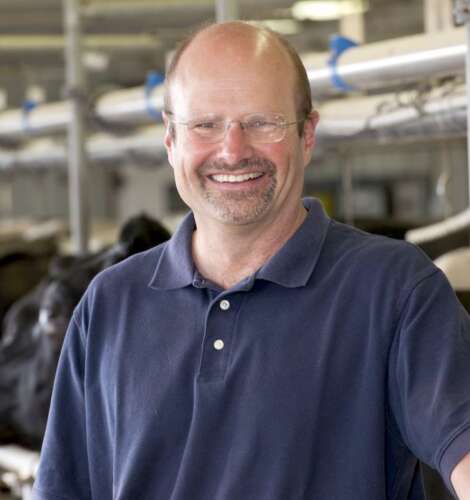
University of Guelph researchers are investigating ways to ensure our favourite latte is made with suitably frothy milk.
At times, Canadian baristas have problems foaming milk for their customers’ lattes. It is known that limp lattes are caused by uncharacteristically high amounts of free fatty acids (FFA) in the milk.
Elevated FFA levels are not only a problem in foamed milk, but they are also associated with rancidity, inhibited milk fermentation, off-flavours and cheese coagulation.
A team of U of G researchers consisting of Prof. David Kelton, Dairy Farmers of Ontario Dairy Cattle Health Research Chair in the Department of Population Medicine; M.Sc. student Hannah Woodhouse; and animal biosciences undergraduate Mikayla Ringelberg has studied ways to reduce FFA levels in milk before it reaches our coffee cup.
They have found measures can be taken on the farm to ensure a milk that froths.
“There’s a genetic component to elevated FFA levels in dairy cows, but we are finding many contributing farm-level factors, some of which can be managed to optimize the quality of milk,” said Kelton. “These include aspects of lactating cow nutrition, but more so, how the milk is handled after it leaves the cow.”

Elevated FFA levels can be caused by damage to the milk fat globule membrane, which often occurs during handling after milking. Damage to the membrane releases FFA.
Milk is about 4.2-per-cent fat, most of it present as triglycerides (TAGs), consisting of a glycerol backbone attached to three fatty acids. Milk fat globule membranes surround TAGs, helping them to maintain their structure.
Lipolysis, a natural process in milk, occurs when fats eventually break down. This process happens on its own, but chemical or physical stress to the milk fat membrane speeds it up and can cause FFA release. Elevated levels can eventually impair milk quality.
At coffee shops, frothing milk is created by heating and introducing air bubbles when milk is whipped or steamed. Milk proteins lock in this new structure by surrounding the bubbles. Fat molecules can displace the protein and cause the bubbles to collapse. When FFAs are high, milk will not foam.
The Guelph team focused on how on-farm milk handling affects FFA levels. Last year, in a pilot study involving 50 farms, they analyzed the relationship between milk handling and FFA content of bulk tank milk.
They found narrow pipelines and lack of pre-cooling before the milk entered the bulk tank could lead to elevated FFA levels.
Narrower pipelines increase turbulence, which physically disrupts the fat globules in milk, causing a release of FFA. Pre-cooling systems decrease bacteria counts in milk, reducing the numbers of bacteria available to release lipases, or enzymes that break down fats.
Kelton said further work needs to be done to confirm these results and identify other important factors in elevated FFA.
This fall, he and Woodhouse are expanding the study to include more factors, including the nutritional characteristics of the lactating cow feed ration and more detail about on-farm milk cooling.
“Milk is a superb nutrient-dense product, but it’s also a highly fragile commodity,” said Kelton. “To optimize the product quality that ends up on store shelves, it’s crucial to improve handling methods. Our research has made us think more critically about how milk is handled after it leaves the cow.”
This research is funded by Dairy Farmers of Ontario.
Contact:
Prof. David Kelton
dkelton@uoguelph.ca
